Affiliate links on Android Authority may earn us a commission. Learn more.
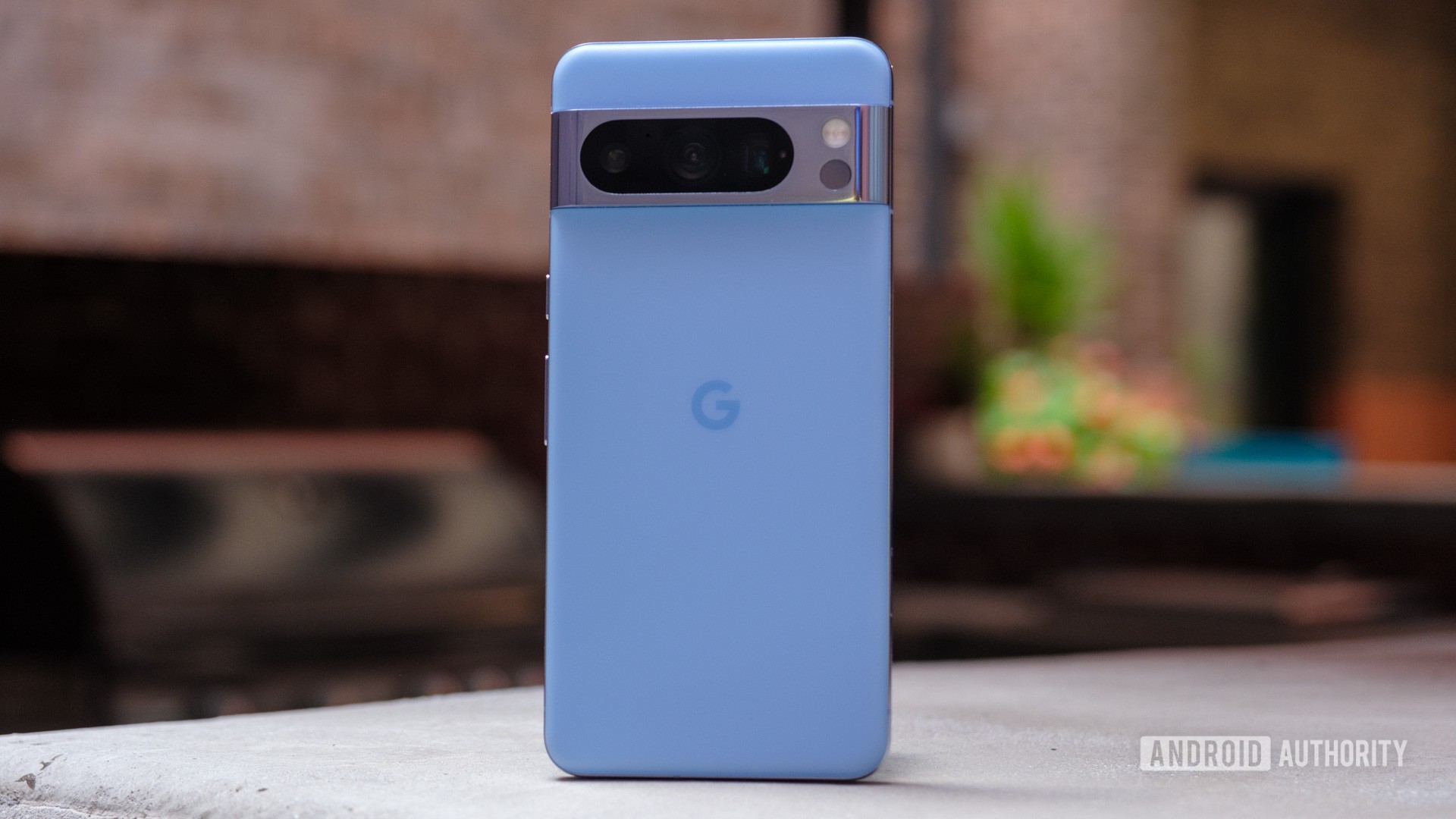


Google Pixel 8 Pro
MSRP: $999.99
What we like
What we don't like

Google Pixel 8 Pro
They say that the first time is luck and the second time is a coincidence, but the third time is when you establish a tradition. In Pixel terms, Google’s Pro phones have reached tradition. It headlined the introduction of an exciting new design and in-house chipset with the Pixel 6 Pro, refined its formula with the Pixel 7 Pro, and now the Pixel 8 Pro gets to reap the benefits as it takes on the best phones around. But how much has Google learned in its three years of Tensor chips, camera bars, and Pro aspirations? Is its flavor of AI-fueled Android still as sweet as it once was? Find out in our Google Pixel 8 Pro review.
Google Pixel 8 Pro review: At a glance
- What is it? The Pixel 8 Pro is Google's premium flagship, offering a 6.7-inch display with a truly variable refresh rate, an improved Tensor G3 chipset, and a reworked trio of rear cameras. It succeeds the Pixel 7 Pro with a few design tweaks, updated charging speeds, and a slate of new AI-powered software tricks.
- What is the price? Google's Pixel 8 Pro is priced at $999 for the base model — a $100 increase over its predecessor — with 12GB of RAM and 128GB of storage. You can upgrade to as much as 1TB of storage for $1,399.
- Where can you buy it? The Google Pixel 8 Pro opened for pre-orders following the Made by Google event on October 4, 2023, with open sales beginning on October 11. It's available from the Google Store and retailers like Best Buy and Amazon, and US carriers, including Verizon, T-Mobile, and AT&T.
- How did we test it? I tested the Google Pixel 8 Pro for 10 days. The unit was supplied by Google for this review.
- Is it worth it? If you like Google's approach to Android, the Pixel 8 Pro is worth every penny. It's jam-packed with AI-centric features that make life a little more comfortable, and it rivals the iPhone for the best update commitment around. Mix in a revamped design, an ever-growing list of editing tools and trick, slightly faster charging, and top-notch materials, and it's easy to call the Pixel 8 Pro Google's most complete flagship to date.
Update, May 2024: We’ve updated our Google Pixel 8 Pro review with new alternatives.
What I like about the Google Pixel 8 Pro
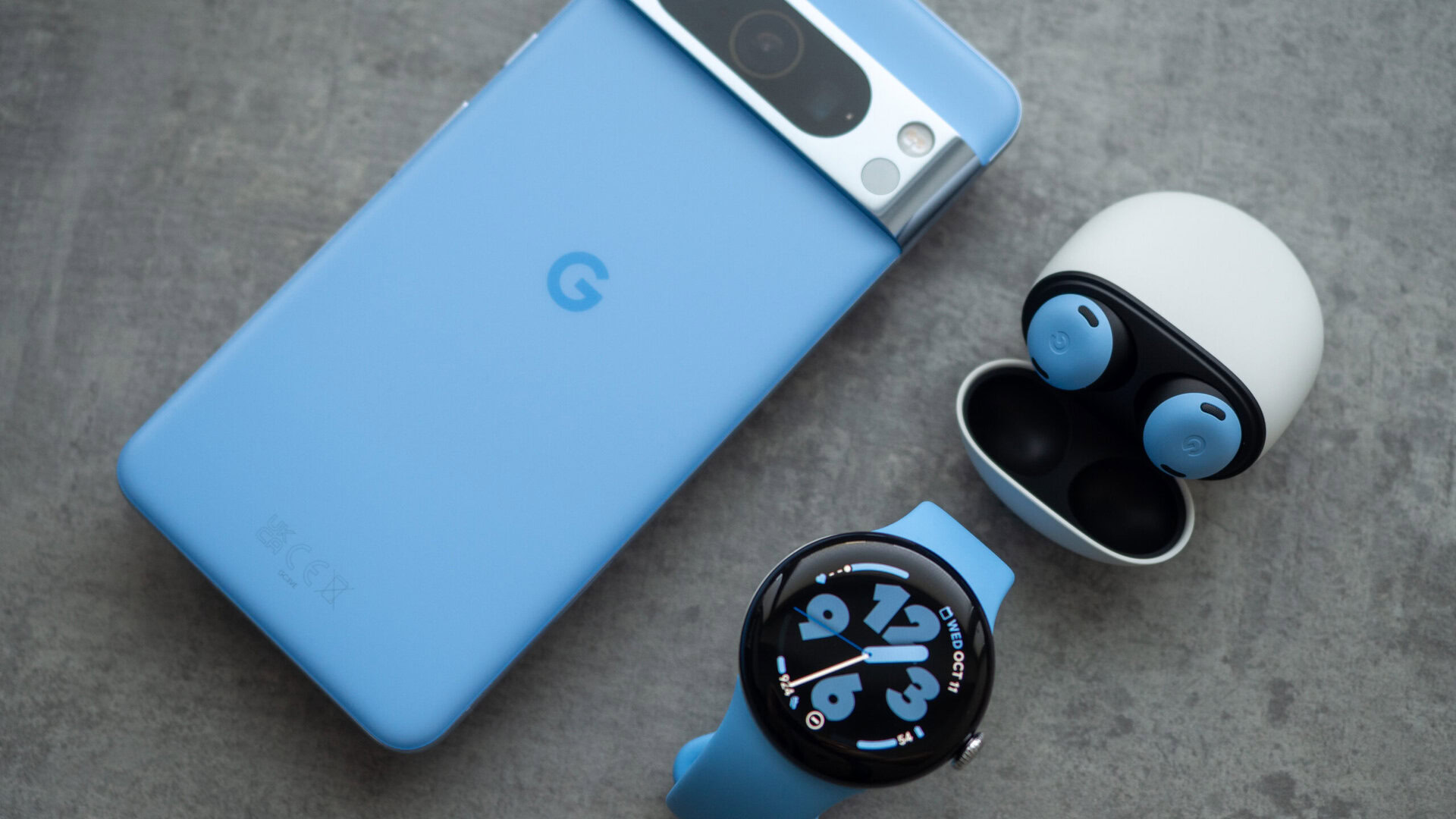
I’ll readily admit that I’m partial to Google’s Pixel experience. Given my choice — which happens but a few months out of the year, I have to test a lot of phones! — you’ll probably find the most recent Pro-level Pixel in my pocket. I jumped right on board when Google unveiled its bold new design with the Pixel 6 series. Its camera bar zigged while most corner-mounted options zagged, and the split design opened the door for two-toned colorways to come back into fashion. I was happy to see it stick around for the Pixel 7 series, trickle to the budget-focused Pixel A family, and evolve into the Pixel Fold.
Now, the Pixel 8 Pro’s design has begun to evolve. It’s finally embraced a few of the changes we’ve been asking for since the dawn of the camera bar, and the result is almost perfection. Google sent its curved display to the great smartphone graveyard, trading it for a 6.7-inch slab of crisp, flat, second-generation Gorilla Glass Victus. The new display offers a genuinely variable 1-120Hz refresh rate and brightness settings that could make the iPhone 15 Pro series blush. Google’s updated AMOLED hits 1,600 nits in high-brightness mode and peaks at 2,400 nits for HDR — a full 400 nits brighter than Apple’s best.
On the flip side, Google dumped its previously glossy glass, too. Instead, the Pixel 8 Pro sports a matte panel of Gorilla Glass Victus 2, which feels incredible. I hesitate to describe glass as soft, but there’s something about the Pixel 8 Pro that makes you not want to put it down. It doesn’t pick up fingerprints or smudges — except on the polished aluminum frame — and the lightly textured glass has just enough grip to sit comfortably in your hand for hours.
The Pixel 8 Pro says goodbye gloss and hello to matte glass that I simply don't want to put down.
The decision to pair matte glass with a glossy aluminum frame also works out nicely for the Pixel 8 Pro. The two textures play off each other, making the signature camera bar stand out that much more. It’s still thick enough to get some dust above and below the visor, but the sizeable pill-shaped cutout is cleaner than the Pixel 7 Pro’s pill-and-hole design. Most people will want to grab a decent Pixel 8 Pro case to protect their device, regardless, but there’s clear attention to detail from Google throughout the refined design.
Speaking of refinements, Google seems to have ironed out many of its previous connectivity errors — another vital sign of maturity. I walked into my local Verizon store to re-activate a physical SIM card after spending a few weeks with an eSIM while testing the iPhone 15, and my Pixel 8 Pro picked up a reliable signal in seconds. The Verizon employee was as surprised as I was, remarking that surely the phone was just over-eager and would take a few minutes to connect. A test call proved that wasn’t the case and that the Pixel 8 Pro really is that quick. Granted, I set my device up from scratch like always, so I can’t speak to whether the experience is better or worse if you restore from a previous device. I haven’t noticed any issues with the network dropping or searching during my time with the phone, either.
While I’ve always been drawn to Google’s unique Pixel design, its flawed Tensor chipset usually proves its undoing. After growing tired of the red-hot thermals and underwhelming battery life, I ditched the Pixel 7 Pro for Samsung’s Galaxy S23 Ultra, but promises of an improved Tensor G3 brought me back to the well. So far, I’m glad I came back. It’s easy to say that the Tensor G3 is probably the piece of the Pixel 8 Pro that’ll be felt the longest.
Before we get into the nitty-gritty of the benchmarks and the daily performance, I think it’s worth acknowledging that with the Tensor G3, we can finally understand Google’s reasoning behind bringing its chipsets in-house. Thanks to increased control over every aspect of its hardware, the Pixel 8 series now has the best Android update policy. With Google’s engineers controlling both the chipset development and the software support, the Pixel 8 Pro is slated for a whopping seven years of Android and security updates, carrying it to 2030. It’s a promise that leaves Samsung’s four Android updates and five years of security support in the dust. It also rivals Apple for the best around, with the Cupertino company sometimes supporting its phones for a similar timeframe but not actually providing a set-in-stone-promise that it will do so. Google also says this will include Feature Drops, so the phone should continue to evolve over time, too.
Seven years of software and security support puts Google far in the lead among Android competition, and even ahead of Apple.
In addition to extensive long-term support, the Tensor G3 is behind just about all of the Pixel 8 Pro’s powerful new software features. It’s integral to camera-based upgrades like Magic Editor, Best Take, and Video Boost (which we’ll come back to later in this review for a dedicated look at the camera), and these unique features just wouldn’t be possible with an off-the-shelf chipset. One of my immediate favorite features of the Pixel 8 Pro is its ability to generate wallpapers based on prompts. I’ve been cycling through a few different designs, and it doesn’t seem like you can run out of options. Granted, the results are a bit more artifact-heavy than some more advanced AI models, but I usually lean toward an abstract wallpaper over a picture-perfect one anyway. After all, who knows what a flying saucer really looks like?
The ability to crank out wallpapers until the cows come home pairs beautifully with Android 14‘s new lock screen customizations. You can now swipe through several clock styles and colors, giving you as many options after deciding on a wallpaper as before. Google’s always-on display hangs onto your customizations, too, keeping a consistent clock style without going full Apple and just leaving your display on but dimmed. I’m still rocking a UFO-inspired wallpaper and snagged a lava-lamp-esque clock to match.
Sticking with the Pixel 8 Pro’s software, Google’s Gemini AI platform is finally working its way into every last inch of the flagship. You might remember the Gemini name as originally covering Google’s language model, but it’s since been expanded to include the Bard chatbot and other AI-based features. Now, it’s somewhat taken the place of Google Assistant, too. You can install the Gemini app (it’s still optional), at which point you can choose to have the generative AI platform take over for your usual assistant. It introduces new ways to interact with Gemini, including the ability to type questions out, search from a photo, or use your voice to dictate prompts. Granted, Gemini still isn’t perfect — most on-device AI is still in the learning stages, after all — but it’s making progress.
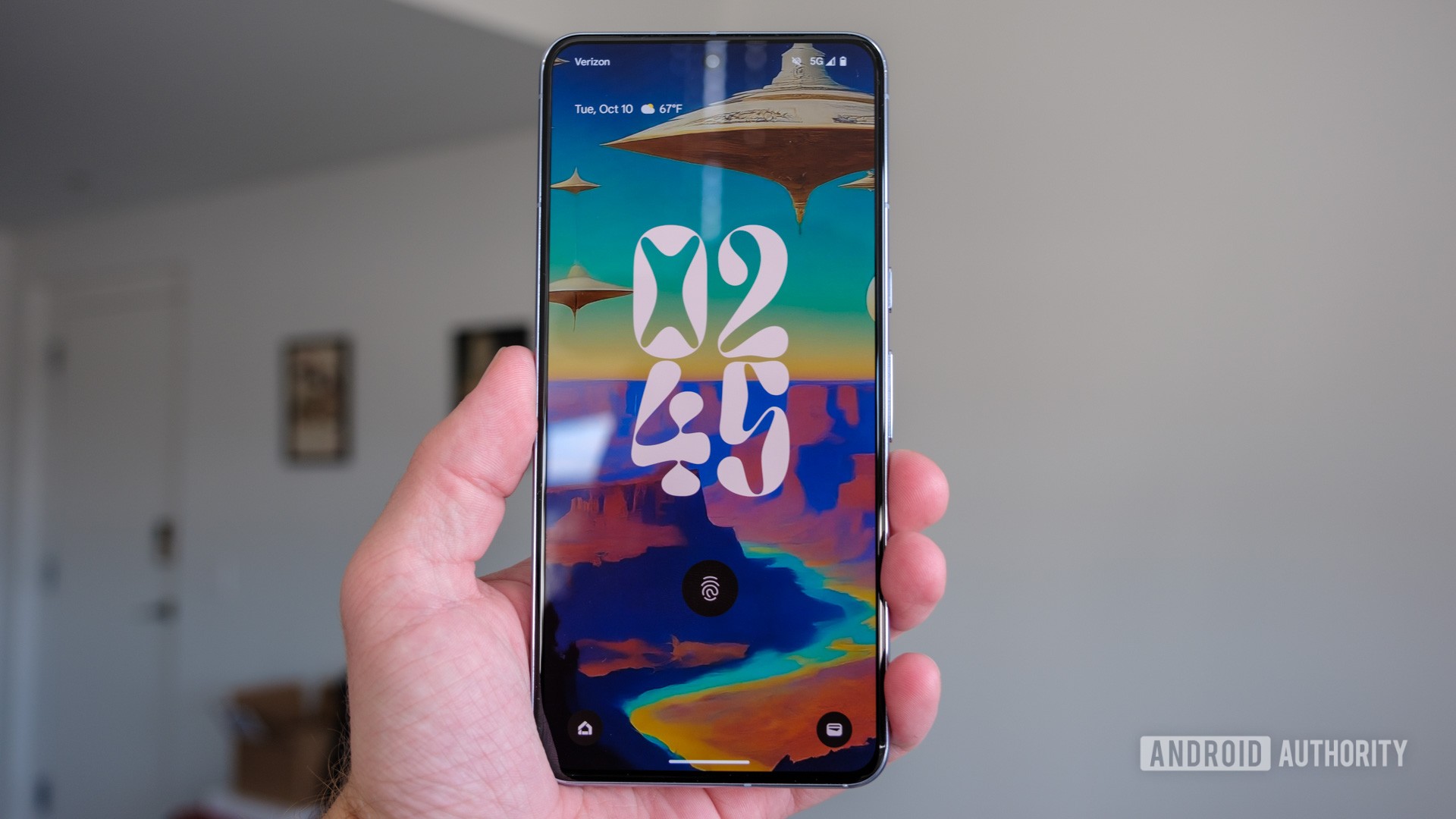
Google’s Pixel 8 series also offers upgraded Face Unlock with Class 3 security. It’s finally secure enough for mobile payments and purchases without resorting to your fingerprint, and Google achieved the upgrade by training the Tensor G3 with new machine learning algorithms. Most Android devices don’t manage Class 3 security due to their camera-based setup, but the Pixel 8 Pro offers the best of both worlds by not resorting to a bulky setup like Apple’s Face ID.
Now that we’ve touched on some of the fun features behind Google’s Tensor G3, let’s talk about a hot topic — thermal performance. The very, very good news is that Google’s updated chipset no longer burns like a neutron star. We can get into the chipset’s benchmarking numbers later (spoiler: they’re not great if you’re a power user), but the important part is that Google’s everyday performance is right where it should be without the Pixel 8 Pro trying to cook itself alive. Sure, it still gets a little warm if you’re pushing it for hours of streaming and GPS while driving home for the weekend, but the Tensor G3 no longer heats up after just a few minutes of scrolling Instagram or playing Ultimate Golf. As a result, the Pixel 8 Pro’s battery doesn’t sink like a stone, meaning you can push it a bit longer before reaching for a charger.
Of course, you will have to grab your charger eventually. In my time with the Pixel 8 Pro, I managed almost a day and a half between charges, which is impressive given the testing-heavy nature of my experience. I hit around five hours of screen-on time with about 25% battery remaining on the best of days, usually with a lighter mix of gaming, Spotify streaming, and social media scrolling, though other stress-heavy days left me with closer to four hours. Those heavier days usually left me sitting on about 10% battery by bedtime, meaning I’d have to use adaptive charging overnight or reach for a plug first thing in the morning.
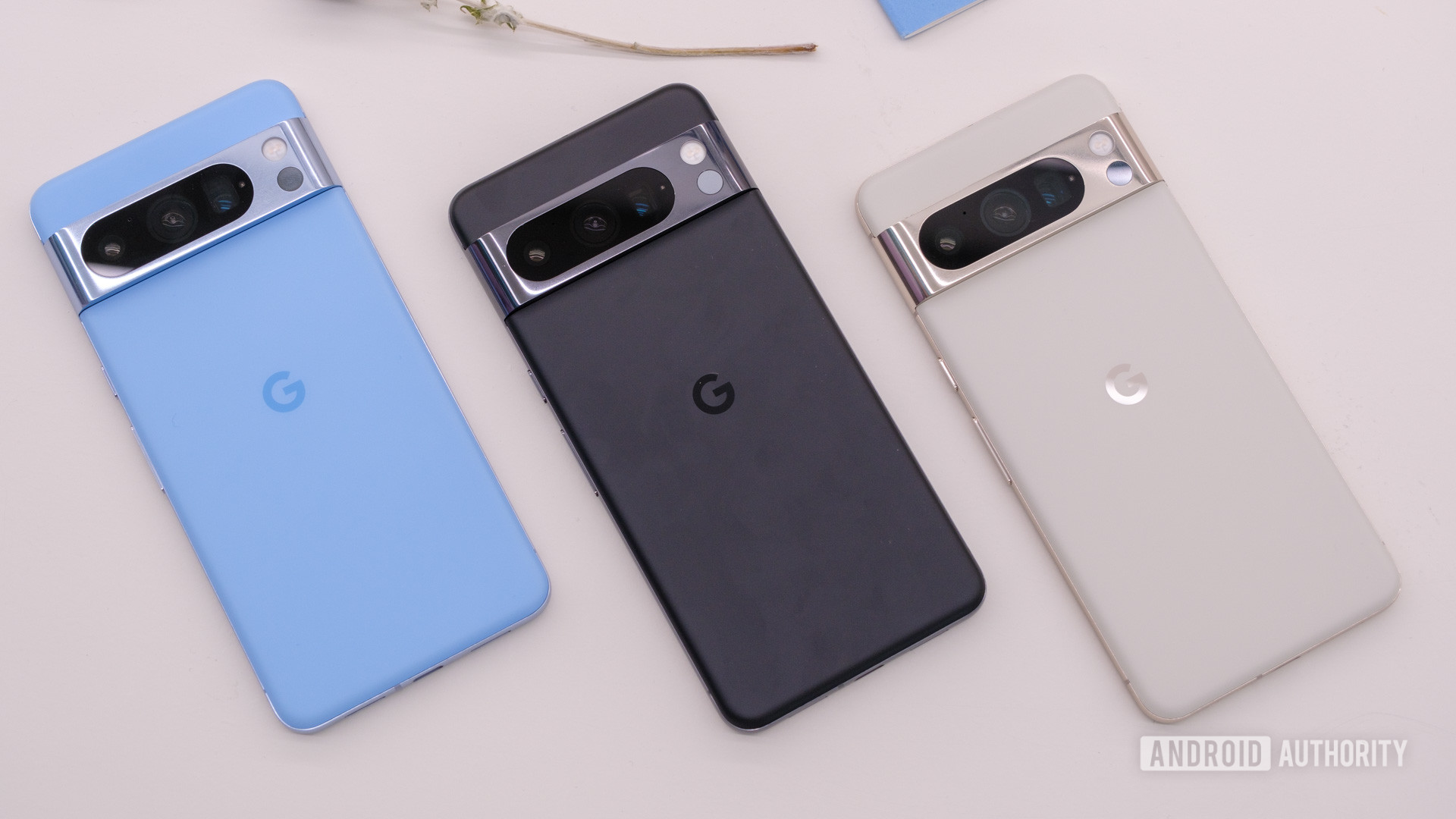
When I did reach for a charger, Google had a pleasant surprise in store — the Pixel 8 Pro charges faster than its predecessor. After years of claiming the best speeds with Google’s in-house 30W charger, the Pixel 8 Pro comes closer to hitting those marks. You don’t need Google’s special 30W brick — any USB PD PPS charger will do — and the Pixel 8 Pro seems to top out at around 27W. In my experience, that translates to just over 80 minutes to climb from 2% to full, and the heat buildup isn’t as noticeable. If you prefer wireless charging, Google’s second-generation Pixel Stand is your best bet, offering up to 23W speeds on the Pixel 8 Pro, though a basic Qi wireless pad up to 12W will also work just fine.
Last but certainly not least, it’s good to see Google embracing higher storage tiers. All versions of the Pixel 8 Pro come with 12GB of RAM, but now you can opt for up to a full 1TB of space if you want it. The storage comes at a cost — the 1TB model costs $1,399 — but it’s more than worth it if you plan to use Google’s new video features to their fullest extent.
What I don’t like about the Google Pixel 8 Pro
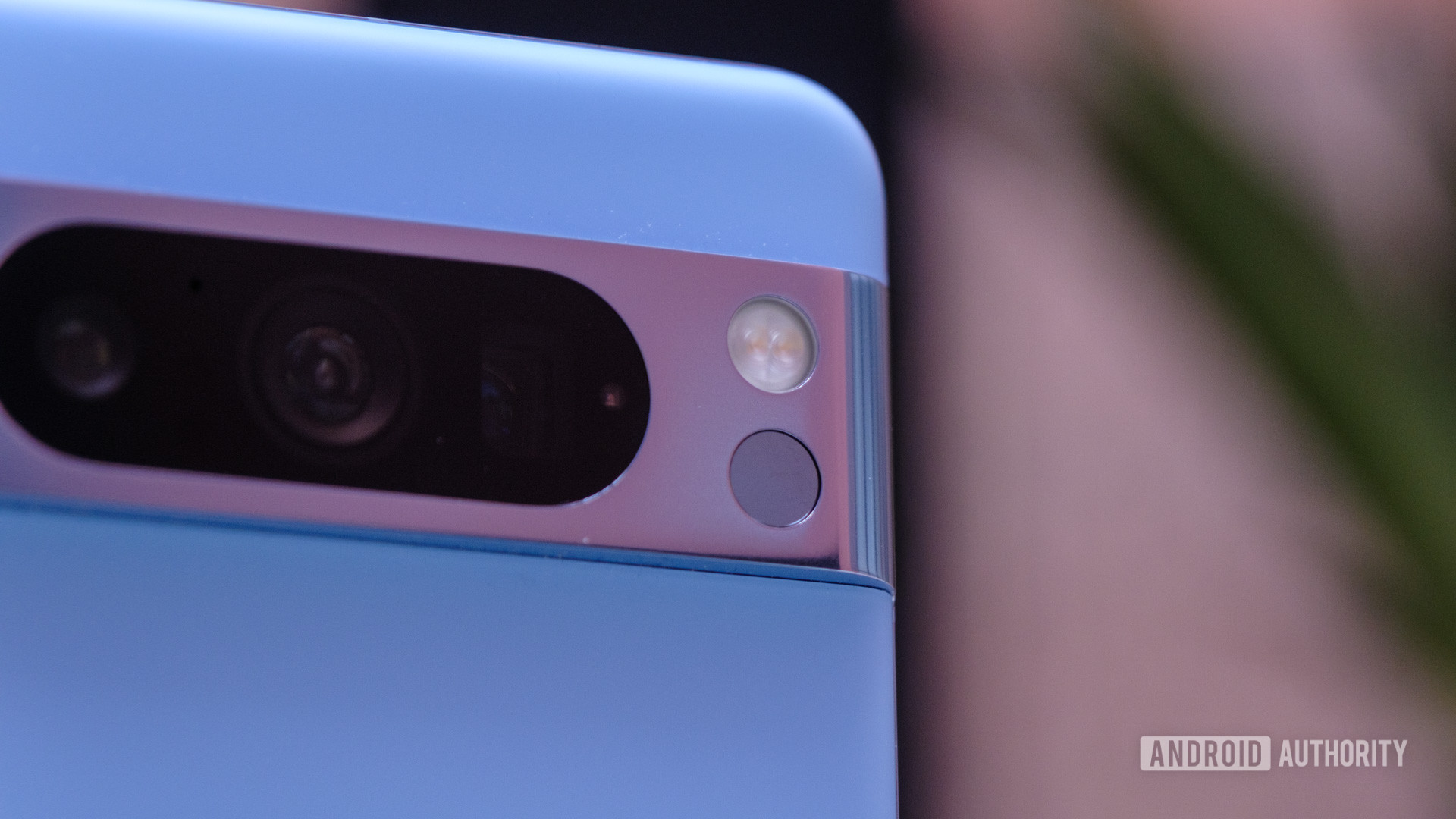
The positives far outweigh the negatives on the Pixel 8 Pro, but Google always finds a way to make me scratch my head. With the Pixel 6 and Pixel 7 series’, the combination of miserable thermals and dismal charging left me confused, but with the Pixel 8 Pro, it’s a particular hardware feature — the temperature sensor. Now, the sensor itself isn’t necessarily a bad thing — it’s more of a solution in search of a problem. Perhaps it’s just an example of Google reacting to the global pandemic, but if so, it’s a reaction coming far too late.
If that’s not the case, I’m not sure why Google decided its Pixel 8 Pro needed a temperature sensor. Its implementations are limited at best and even more limited at launch. Google is still waiting on FDA approval to use its temperature sensor on humans, which means it’s currently restricted to objects and surfaces. You can check to see if your coffee is too hot or if your pan is ready to cook a grilled cheese, but that’s about it. Both of those use cases are useful in theory, but you can also hold your hand above your pan or against your mug for the same results.
It wouldn't be a Pixel without a weird feature, and this year it's the temperature sensor...
On one hand, the presence of the temperature sensor means that Google is back to its experimental features, which is a good thing. We previously saw Google test features like the Soli chip, the squeeze-activated Assistant, and several others to see what stuck. Sometimes, they worked, like in the case of Quick Tap, but they often ended up in the Google graveyard. We’ll see how the temperature sensor shakes out, but hopefully, it’s just a sign of Google flexing some creative muscle.
On the other hand, just mentioning the Google graveyard is reason enough to doubt the temperature sensor. Google has a habit of killing features, products, and services as soon as it no longer has fun with them, making it hard to trust the search giant. Some of Google’s best ideas (looking at you, Stadia) aren’t given the time they need to grow, only to be axed right before the launch of hardware to support them (hello, gaming-focused Chromebooks). Basically, I have no reason to trust that the temperature sensor will stick around, nor does it seem to have the use cases in the first place.
Struggling to trust Google and its longevity gets a bit worse when you consider the features that the Pixel 8 Pro doesn’t have at launch. Some of its best camera tricks won’t be available until later in the year. Now, I trust that Google will come good on its promises — it showed off too much of Video Boost and Video Night Sight to put the cat back in the bag — but you’re still spending $999 on an unfinished product.
Oh, and that’s right, the Pixel 8 Pro now costs $999. After spending two years as a slam dunk value at $899, Google decided to wade into highly competitive waters. Unfortunately, diving back in with the sharks makes each misstep much more noticeable. The most noticeable slip is that when running through benchmarks, the Tensor G3 still doesn’t hold a candle to Apple’s A17 Pro or Samsung’s overclocked Snapdragon 8 Gen 2 for Galaxy.
We put all three chipsets through their paces in our usual 3DMark, Geekbench 6, and PCMark tests, and the Tensor G3 came up short each time. In CPU testing, it managed just 59% of the A17 Pro’s single-core Geekbench 6 performance, though it came closer to the Galaxy S23 Ultra’s performance, hitting almost 90% of the Snapdragon 8 Gen 2 for Galaxy’s mark. The Tensor’s multi-core effort told a similar story, with Google achieving just 61% of the A17 Pro’s power and dropping to 85% of Samsung’s output.
Unfortunately, graphics performance and long-term sustained efforts didn’t swing things any closer in Google’s favor. The Pixel 8 Pro didn’t crack 8,700 on a single run of 3DMark’s Wild Life test, far behind the Galaxy S23 Ultra, and only in touching distance of the iPhone 15 Pro due to iOS’ 60fps cap in this particular test (it gets trounced in the Extreme version with no such restrictions).
The Tensor G3’s underwhelming benchmarking numbers are nothing new. We’ve seen Google come up short on the testing floor before while offering a bevy of software features and camera capabilities that earn a place in our hearts. The good news is that the Pixel 8 Pro does the same while not falling into the thermal pits of the previous generations, but that won’t stop it from aging faster than its competitors in use cases that demand peak performance, especially gaming. This will be even more so if ray tracing on mobile takes off, as the Tensor G3 doesn’t support it. The result is a phone that’ll be supported with software updates for seven years that performs perfectly well right now, but is far from guaranteed to have the raw power necessary to cope with user demands until the day that policy expires.
Google Pixel 8 Pro camera review
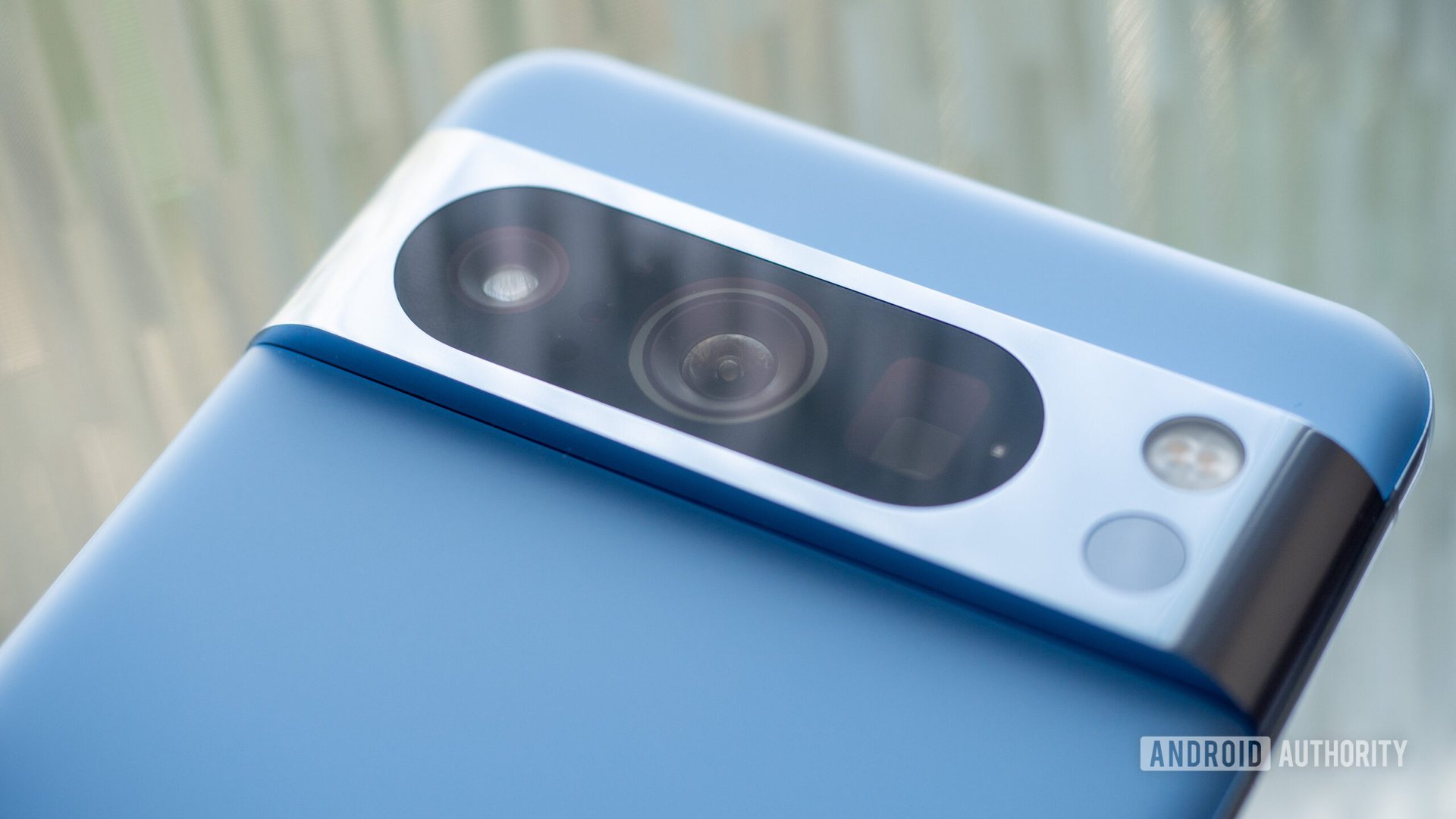
And now, for the feature that probably brought most users to a Pixel device in the first place: its cameras. At a glance, the Pixel 8 Pro’s camera bar doesn’t look much different than its predecessor, which was one of the best camera phones from the day it launched. Sure, Google rearranged the shape a little bit, swapping from a pill and a hole to just a pill, but there are a few more changes behind the Geordi La Forge-esque slice of glass.
First up, the changes. Google swapped from a 12MP ultrawide sensor to a 48MP option, picking up a wider maximum aperture (f/2.0 instead of f/2.2) and shifting to smaller individual pixels in the process. The Pixel 8 Pro’s 48MP telephoto sensor also grabbed a few minor upgrades, including a wider maximum aperture of f/2.8 and a slightly wider field of view (about one degree). Not to be left out, the Pixel 8 Pro’s 50MP primary camera got in on the wider aperture fun, too, but skipped most of the other upgrades. It bumped from f/1.85 to f/1.7 and kept the same pixel size as the previous Pixel 7 Pro. Ultimately, the wider apertures are all worth mentioning as they mean the Pixel 8 Pro’s sensors can capture more light, offering a boost to performance when Night Sight comes into play for low-light photography.
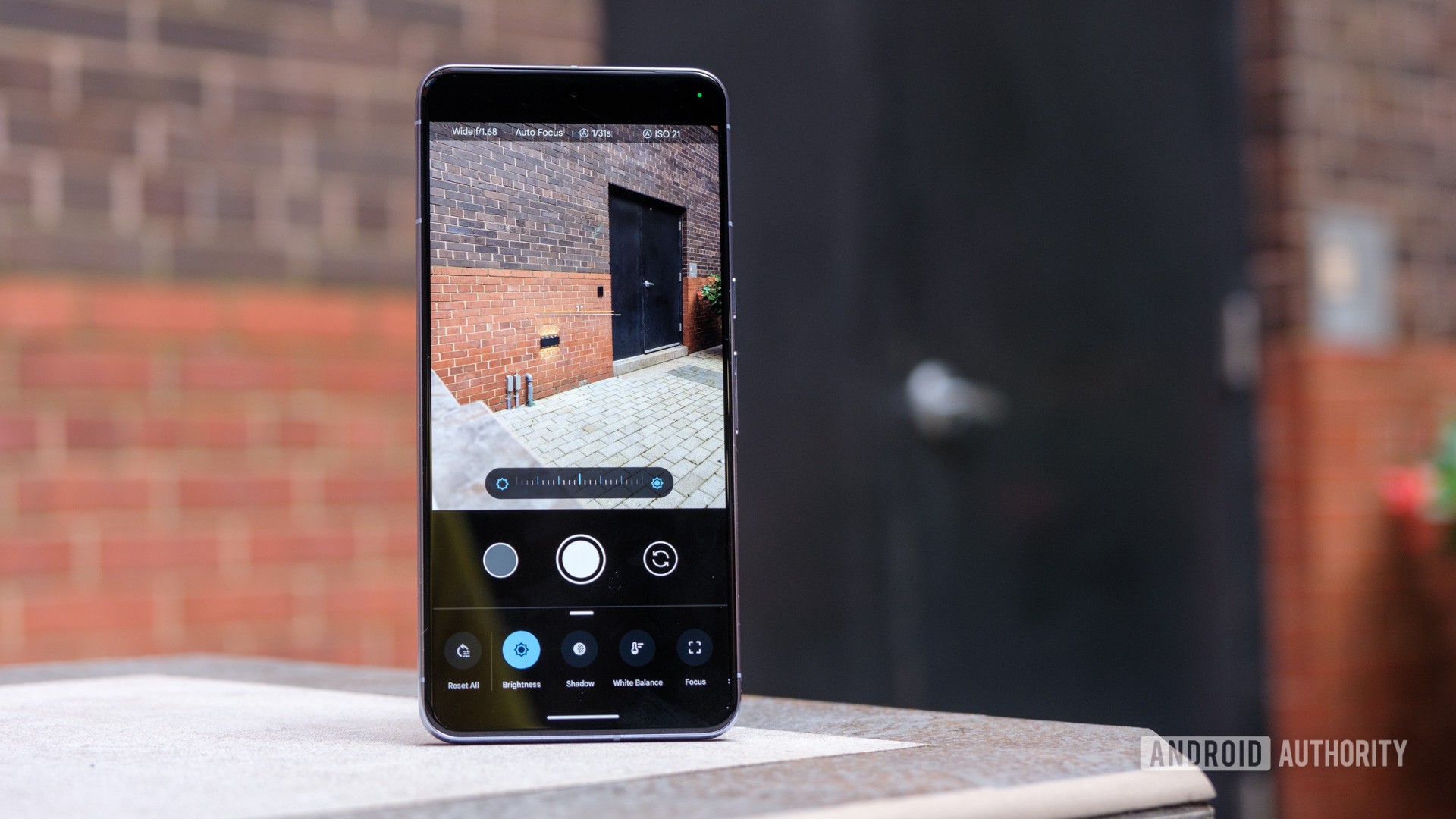
Of course, if you’ve used a Pixel device before, you know that Google’s software is just as essential as its hardware — if not more so. And while it may look the same at first glance, the Pixel 8 Pro’s camera app — now dubbed the Pixel Camera — has a huge new wrinkle: manual camera controls. After years of begging and pleading from us here at Android Authority, you can now control the ISO, aperture, and shutter speed on a Google Pixel device. It’s exclusive to the Pixel 8 Pro, but we’re happy to see Google take a step toward camera freedom rather than asking us to tap the shutter and trust the Tensor. Don’t worry, you can still do that — and many probably will — but now the Pixel 8 Pro has a new way to challenge Samsung’s camera dominance.
On top of new manual controls, Google’s Tensor G3 chipset powers some of the Pixel 8 Pro’s best tricks. Magic Eraser has evolved into Magic Editor, allowing you to take Photoshop-like control over your Google Photos to move people and objects and fill their original positions. The Pixel 8 Pro also introduces Best Take, which lets you swap individual faces in a group shot for the perfect photo with smiles all around.
Google's Tensor G3 is at the heart of its image processing, and the best tricks are yet to come.
The Pixel 8 Pro will also pick up support for Video Boost in an upcoming update. The idea is that Google will take your raw footage, send it to a data center, and bring back an enhanced version of your shot. Video Boost should take care of stabilization, clarity, and brightness once it’s eventually made available. Google’s Video Night Sight is exactly what it sounds like, emphasizing brightening low-light videos without blowing out the colors. On paper, these features should do for video what Google’s computational photography evolutions have done for stills, but we’ll have to test all of these editing tricks once they’re available to see how they perform.
Now, without further ado, our camera samples. I’m pulling from a vast library of options, mostly thanks to my colleague Rita, who seemingly captured all of Paris in a single weekend. She captured all seven images below with the Pixel 8 Pro’s primary camera, many of which look like works of art. The cafe and library scenes are about as textbook Paris as it gets, and the details and color are spot-on. Google also pulled impressive details out of the painting of eyes, making it so that several brush strokes are just about visible (even if the painting itself is pretty creepy). The Pixel 8 Pro also seems to have remedied some of the lens flare issues that plagued its predecessor. You can still see a slight flare in the image of the cemetery to the left, but it’s not enough to ruin the entire shot.
The Pixel 8 Pro’s ultrawide sensor delivers solid results, too. I have no issues with any of the color profiles; they all seem to match the primary sensor just about perfectly. There’s a bit of lens flare in the image featuring a boat, but I did shoot straight into the sun, so it’s to be expected. Even with the sun in the image, the Pixel 8 Pro was able to capture several details on the boat itself if you’re willing to pixel-peep. The image of the pond preserved the individual sticks in the shadowy area, too, and I have no complaints regarding distortion.
Google’s primary and telephoto sensors are just about the same as those on the Pixel 7 Pro, which means we shouldn’t expect any hardware-based upgrades when it comes to zoom. The Pixel 8 Pro still offers up to 5x optical zoom, and its Super Res Zoom tops out at 30x, just like the Pixel 7 Pro did. Even though it doesn’t hold a candle to the Galaxy S23 Ultra’s 100x maximum, the Pixel 8 Pro seems to handle its full range without issue. The series of lights on top of the boat packs plenty of detail, for example, and the top of the monument below shows staining in different letters, and the concrete pattern is crisp.
Alright, back to some of Rita’s shots to show off the Pixel 8 Pro’s Macro Focus. This pairs the Tensor G3 with Google’s ultrawide camera to take extreme close-ups, but it’s only available on the Pixel 8 Pro, not the Pixel 8. The attention to detail and color recreation is simply excellent across all three shots below, with the red and orange flowers to the right standing out as especially good. Honestly, it’s hard to understand why some smartphones continue to launch with dedicated macro lenses when software-based results can be this good.
Perhaps the most controversial of Google’s new editing tricks is the aforementioned Magic Editor. It’s essentially the next step in Magic Eraser’s development, adding an almost Photoshop-like level of editing control to your Google Photos. As with Magic Eraser, you can select people and objects, only now you have the power to erase them, move them around, and even resize them. I chose to erase the entire crowd at the cafe below, though I won’t claim that the results are great. Like Google’s AI-generated wallpapers, the fill where the people used to be is full of artifacts, with the benches coming out wonky and the ground getting a bit muddy where the plant used to be.
That said, Magic Editor also lets you tweak the sky and make any photo feel like golden hour. I’m not sure I’d use this often, but it seems to work better than a full-scale replacement of the scene. Swapping the sky also added a nice little tint to the people, trees, and tables, and Magic Editor generates a handful of results in case you’re not convinced by the first attempt.
Shifting to low light, it’s easy to see where Google’s wider maximum apertures come into play. There’s plenty of light in the shots below, with the Pixel 8 Pro picking up remarkable detail on the domed building to the left. A few lighting fixtures are a little blown out, like the ones below the Metropolitain sign, but the rest of the image is clear enough. I also don’t mind the flare around the Eiffel Tower, as it lends an almost anamorphic feel to the image — though it won’t be the look for everyone.
Despite dropping from a 10.8MP selfie camera to a 10.5MP option, the Pixel 8 Pro has no trouble catching details and colors. My face and hair are spot-on in both shots, with portrait mode eliminating a few of the stray curls. I have no complaints with how the Tensor G3 handles edge detection, picking out the ends of my flannel shirt just about perfectly. There’s not much to say about the selfies — they just work.
Until Google’s advanced video processing features drop later in the year, recording video on the Pixel 8 Pro will pretty much feel like it did on the Pixel 7 Pro. It still offers the same support for Cinematic Pan and recording quality up to 4K at 60fps from the front or rear cameras. The Pixel 8 Pro also packs a new option for Audio Magic Eraser, which isolates the audio in your video from background noises for cleaner-sounding results.
You can check out full-size versions of all of the camera samples above at this Google Drive link.
Google Pixel 8 Pro specs
| Google Pixel 8 Pro | |
|---|---|
Display | 6.7-inch LTPO OLED 2,992 x 1,344 resolution 489ppi 20:9 aspect ratio 1-120Hz refresh rate 1,600 nits brightness (HDR) 2,400 nits brightness (peak) HDR support Gorilla Glass Victus 2 |
Processor | Google Tensor G3 |
RAM | 12GB LPDDR5X |
Storage | US: - 128, 256, or 512GB, or 1TB - UFS 3.1 Outside US: - 128, 256, or 512GB - UFS 3.1 |
Power | 5,050mAh (typical) 30W wired charging (USB-PD 3.0 PPS) Qi wireless charging |
Cameras | Rear: - 50MP wide (1.2μm pixel width, ƒ/1.68 aperture, 82-degree FoV, 1/1.31-inch sensor, AF, OIS, EIS) - 48MP ultrawide (0.8μm pixel width, ƒ/1.95 aperture, 125.5-degree FoV, AF) - 48MP telephoto (0.7μm pixel width, ƒ/2.8 aperture, 21.8-degree FoV, 5x optical zoom, OIS, EIS) - Multi-zone laser-detect auto-focus (LDAF) sensor Front: - 10.5MP (1.22μm pixel width, ƒ/2.2 aperture, 95-degree FoV, AF) Camera app has pro controls |
Dimensions and weight | 162.6 x 76.5 x 8.8mm 213g |
Hardware extras | Temperature sensor |
Video | Rear: 4K (24, 30, or 60fps) 1080p (24, 30, or 60fps) Front: 4K (24, 30, or 60fps) Supports: Video Boost, Night Sight Video, Macro Focus Video, 10-bit HDR, Cinematic Blur/Pan, Slo-Mo up to 240fps, 4K timelapse, Astrophotography timelapse, OIS, digital zoom up to 20x, HEVC (H.265), AVC (H.264) |
Audio | Stereo speakers Triple-microphone Spatial audio support |
Ports | USB-C 3.2 Dual-SIM (1x nano SIM and 1x eSIM) |
Security | Titan M2 security chip Under-display fingerprint sensor Face Unlock (Class 3, highest tier) |
Durability | Gorilla Glass Victus 2 (front and back) IP68 rating |
Connectivity | US (PR), CA, UK, EU, AU: - Wi-Fi 7 (802.11be) with 2.4GHz, 5GHz, 6GHz - 2x2+2x2 MIMO - NFC - Bluetooth 5.3 - UWB JP: - Wi-Fi 6E (802.11ax) with 2.4GHz, 5GHz, 6GHz - 2x2+2x2 MIMO - NFC - Bluetooth 5.3 - UWB TW, SG, IN: - Wi-Fi 6 (802.11ax) with 2.4GHz, 5GHz - HE160 MIMO - NFC - Bluetooth 5.3 - UWB |
Network | Model GC3VE (All countries except JP): - GSM/EDGE: Quad-band (850, 900, 1800, 1900MHz) - UMTS/HSPA+/HSDPA: Bands 1, 2, 4, 5, 6, 8, 19 - LTE: Bands B1 / 2 / 3 / 4 / 5 / 7 / 8 / 12 / 13 / 14 / 17 / 18 / 19 / 20 / 25 / 26 / 28 / 30 / 32 / 38 / 40 / 41 / 42 / 46 / 48 / 66 / 71 - 5G Sub-6: Bands n1 / 2 / 3 / 5 / 7 / 8 / 12 / 20 / 25 / 28 / 30 / 38 / 40 / 41 / 66 / 71 / 75 / 76 / 77 / 78 Model G1MNW (All countries except JP): - GSM/EDGE: Quad-band (850, 900, 1800, 1900MHz) - UMTS/HSPA+/HSDPA: Bands 1,2,4,5,6,8,19 - LTE: Bands B1 / 2 / 3 / 4 / 5 / 7 / 8 / 12 / 13 / 14 / 17 / 18 / 19 / 20 / 25 / 26 / 28 / 29 / 30 / 38 / 39 / 40 / 41 / 46 / 48 / 66 / 71 - 5G Sub-6: Bands n1 / 2 / 3 / 5 / 7 / 8 / 12 / 20 / 25 / 26 / 28 / 29 / 30 / 38 / 40 / 41 / 48 / 66 / 70 / 71 / 77 / 78 - 5G mmWave: Bands n257 / 258 / 260 / 261 Model GE9DP (JP): - GSM/EDGE: Quad-band (850, 900, 1800, 1900MHz) - UMTS/HSPA+/HSDPA: Bands 1, 2, 4, 5, 6, 8, 19 - LTE: Bands B1 / 2 / 3 / 4 / 5 / 7 / 8 / 12 / 13 / 14 / 17 / 18 / 19 / 20 / 21 / 25 / 26 / 28 / 30 / 38 / 39 / 40 / 41 / 42 / 48 / 66 / 71 - 5G Sub-6: Bands n1 / 2 / 3 / 5 / 7 / 8 / 12 / 20 / 25 / 28 / 30 / 38 / 40 / 41 / 66 / 71 / 77 / 78 / 79 - 5G mmWave: Bands n257 - FeliCa |
Software | Android 14 7 years of OS upgrades 7 years of security patches 7 years of feature drops |
Colors | Obsidian (black), Porcelain (white), Bay (blue) |
Warranty | US, CA, JP, TW, IN, SG: - 1 year EU, UK, AU: - 2 years |
In-box contents | Google Pixel 8 Pro 1m USB-C to USB-C cable (USB 2.0 speed) Quick Switch adapter SIM tool Paperwork |
Should you buy the Google Pixel 8 Pro?
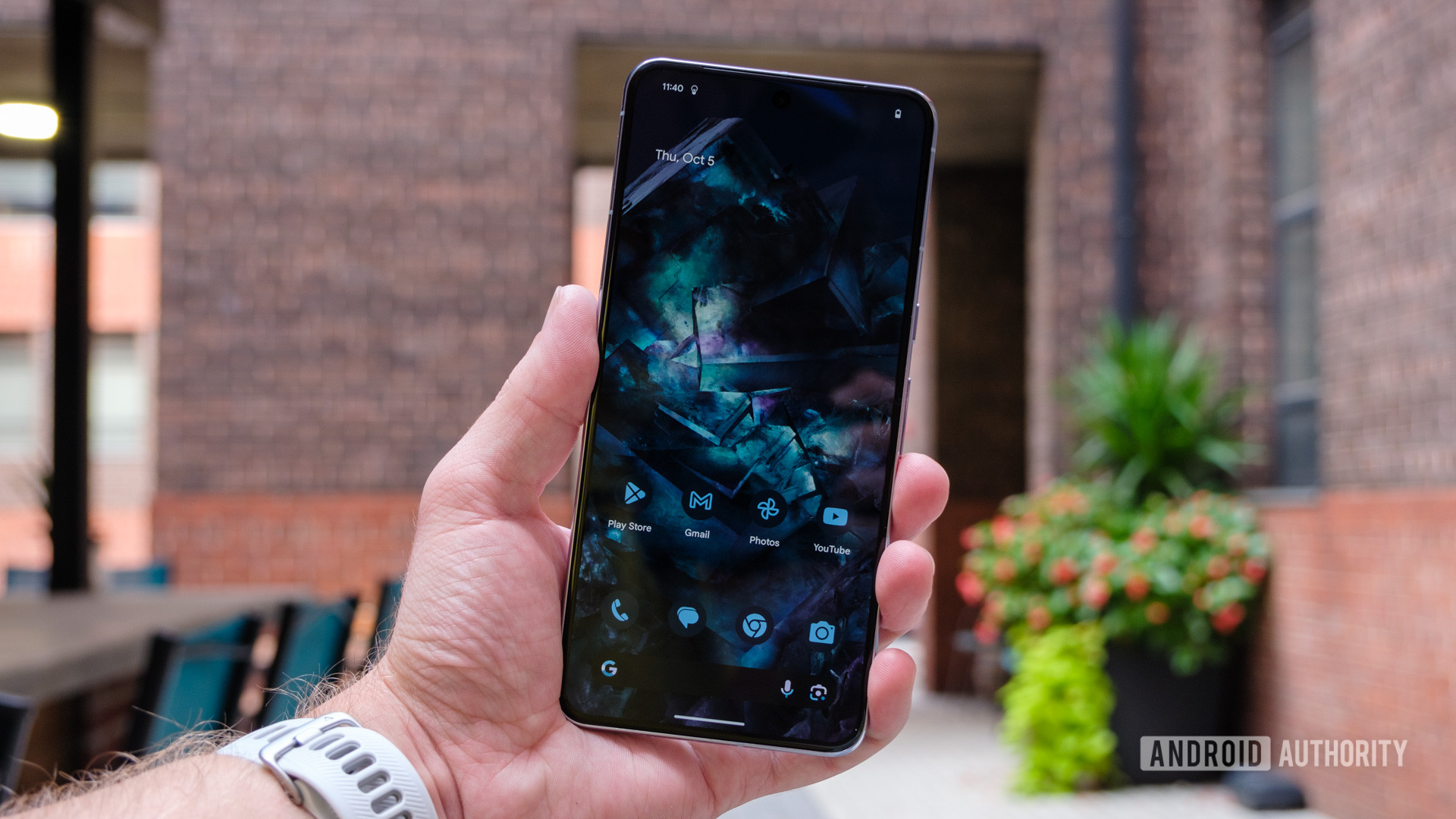
If you like Google’s AI-powered flavor of Android, then this is the phone you’ve been waiting for — full stop. Unless, of course, you prefer small phones, in which case you’ll probably be drawn to the standard Pixel 8. Otherwise, the Google Pixel 8 Pro is a winner. It’s as close to a full realization of Google’s Pixel aspirations as we’ve ever seen, merging refined in-house hardware with an operating-system-leading update commitment while leaving just enough room for experimentation.
Although the Google Pixel 8 Pro no longer has a standout pricing advantage over its closest rivals, its design has reached a level of maturity, and the Tensor G3 no longer burns like a pocket-sized sun. Google’s use of matte glass on the back panel is a change I’ve personally wanted for years, and the rounder corners are much more comfortable in hand. Mix in the revamped cameras, additional AI-powered features like generative wallpapers, and a buttery smooth setup process, and the Pixel 8 Pro is easily a phone that can stay in your pocket for years to come, with the software support to match.
Despite its quirks, the Pixel 8 Pro is easily Google's most complete smartphone to date.
That said, this is still a Pixel device, which means it still has its share of quirks. Google’s Tensor G3 chipset has improved in terms of efficiency but it’s still not on par with the best from Apple and Qualcomm for peak or sustained performance. The Pixel 8 Pro also packs a dedicated temperature sensor that, let’s be honest, most users won’t touch for more than the occasional party trick and to check their kids for a fever. It’s a feature that caters to the needs of a few while also calling to mind Google’s tendency to axe things before their time.
If you’d rather have a base-level Pixel experience on a budget, the new Pixel 8a ($499 at Amazon) is the best value-for-money candidate. It offers major upgrades over its predecessor and uses the same Tensor G3 chipset as the Pixel 8 Pro, although it does skimp on a few on-device AI features. Nevertheless, it’s kinder on the pocket and the wallet.
For those wanting a little more, it’s easy to recommend the vanilla Google Pixel 8 ($699 at Amazon). It skips out on the Pro’s massive display, instead opting for a 6.2-inch panel, though you’re only getting a 60-120Hz dynamic refresh rate. The everyman’s Pixel also hangs onto a glossy glass back but comes in a few fun colors that you won’t find on the Pixel 8 Pro. Like its premium sibling, the Google Pixel 8 carries an elite software commitment thanks to the Tensor G3 chipset, and it benefits from a few of the new editing tricks like Magic Editor. That said, while the Pixel 8 also snagged a $100 price bump this year, it doesn’t get the same level of camera love with extras like manual controls or the upgraded 48MP ultrawide sensor. It also still lacks a dedicated zoom lens, and won’t support Video Boost when it eventually launches.
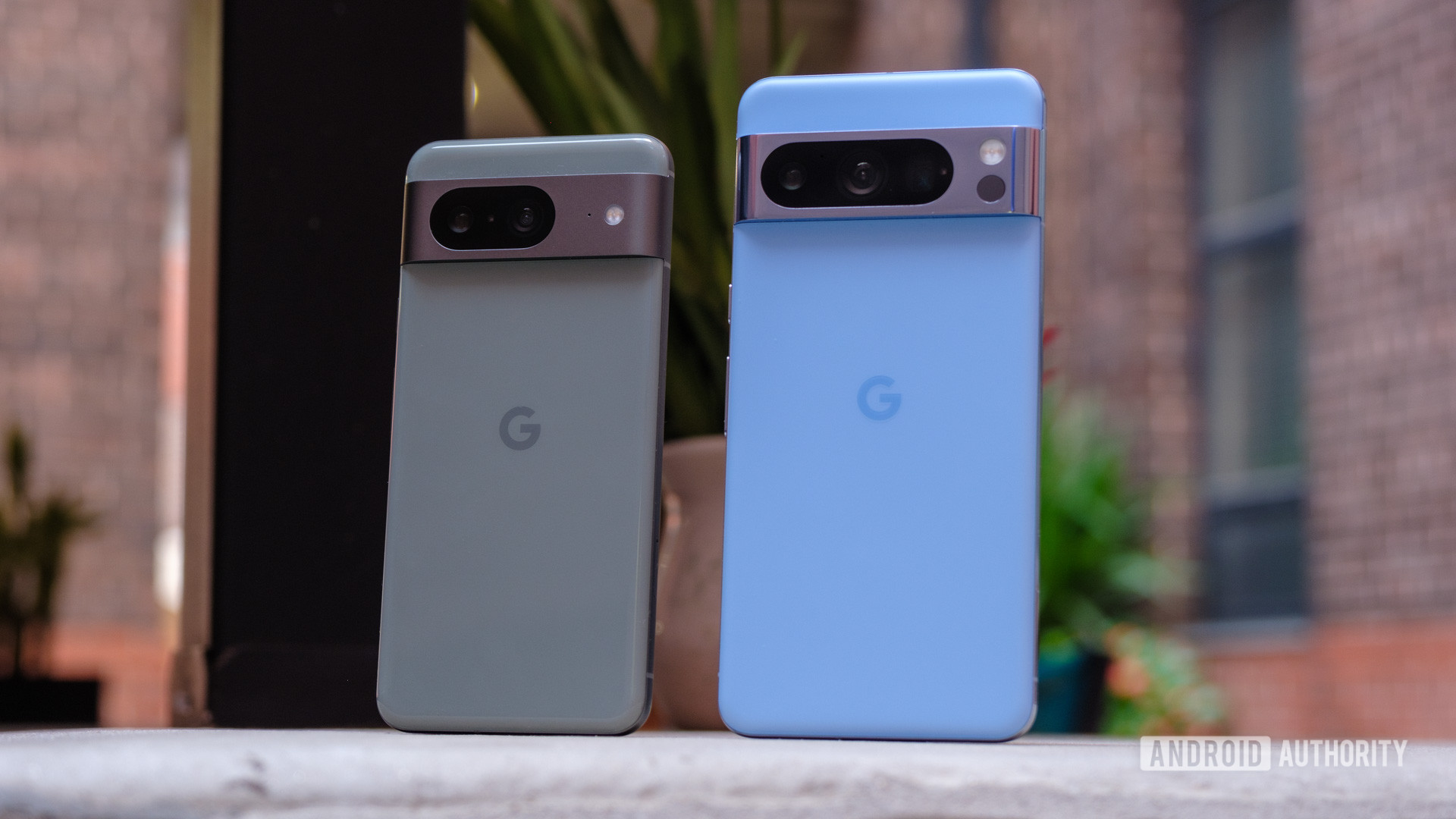
If you’re not entirely sold on Google’s promise of a bright, AI-enabled future, it might be time to look at some of the Pixel 8 Pro’s closest rivals instead.
Following its price bump, the Pro-grade Pixel remains on par with the newer Galaxy S24 Plus ($1119.99 at Amazon). The Samsung has much going for it, including faster 45W peak charging, the swifter Snapdragon 8 Gen 3 for Galaxy with Galaxy AI smarts, and a software update policy that matches Google’s. Sure, Google does score points for those seeking a cleaner Android experience and exclusive tools.
If you have more cash to splash and want the best Android phone you can get, the Galaxy S24 Ultra ($1419.99 at Amazon) includes a 200MP primary camera, a bundled S Pen, and exceptional camera zoom. If money is an issue, the Galaxy S23 series (from $799 at Amazon) is still well worth it, but you will miss out on a few years of software updates, minor hardware upgrades, and Samsung’s new AI tools.
Maybe you’ve decided that you’re not entirely sold on Android. In that case, Apple’s latest iPhone 15 Pro ($999 at Amazon) follows many of the same decisions as the Pixel 8 Pro, establishing itself on a separate tier from the base model. Where Google kept the Tensor G3 consistent across both models, Apple only added its new A17 Pro to the iPhone 15 Pro and Pro Max, pairing it with increased RAM and storage options. You have to go Pro if you want a 120Hz display on your iPhone, too, with the standard models sitting at just 60Hz. Apple is also the only brand that can rival Google for support longevity. It’s not always specific how many updates an iPhone will get, yet we regularly see Apple run for seven or more years before retiring.
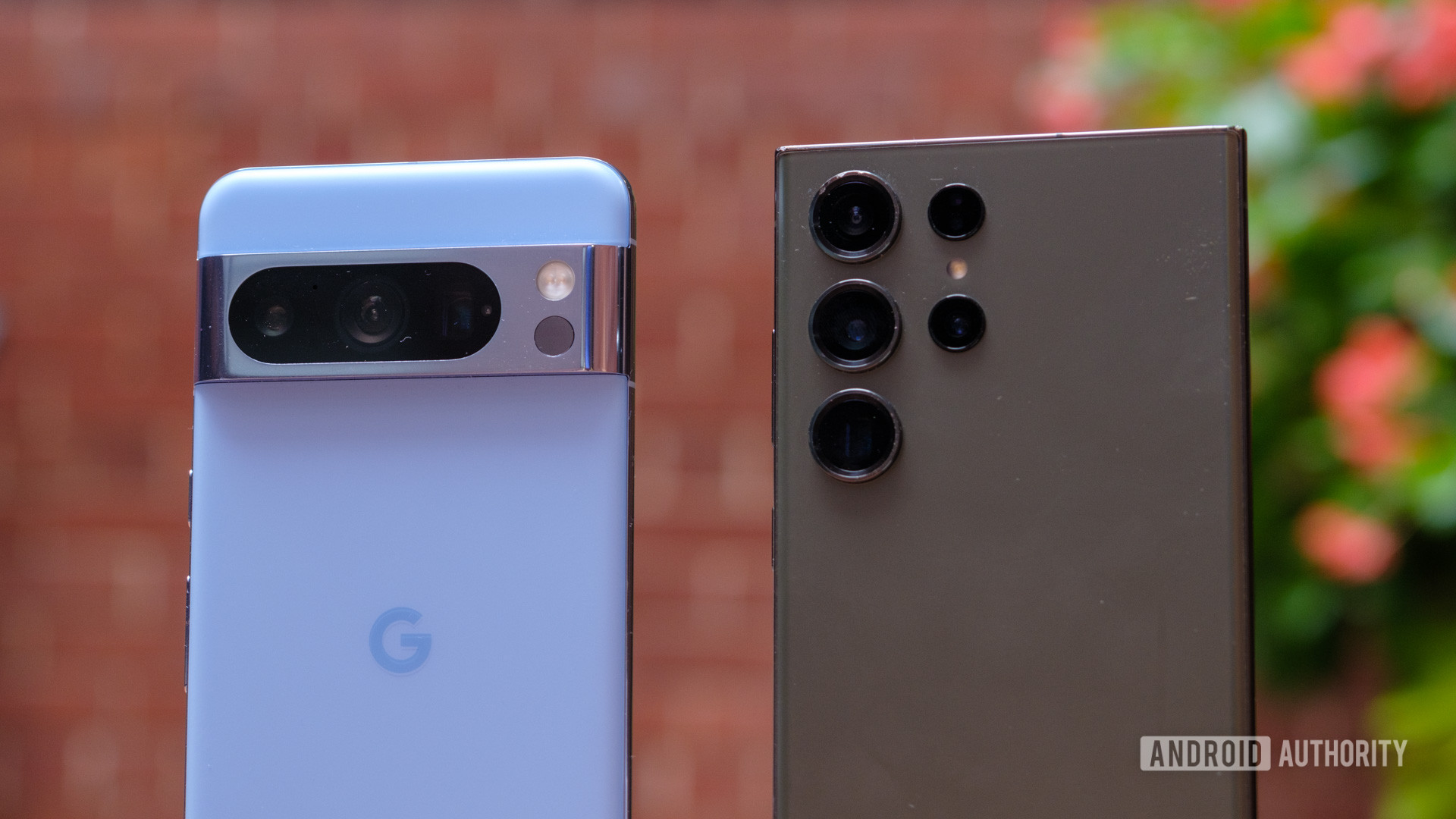
If you’re not ready to rule out Android but want something with a little flash to it, Google’s Pixel 8 Pro is priced right up against some of the best flip phones around. Both the Motorola Razr Plus ($499.99 at Woot!) and Samsung Galaxy Z Flip 5 ($999.99 at Samsung) match the Pixel’s $999 cost of entry, but they bring entirely different experiences to the table. Motorola was the first to adopt the larger cover screen, stretching its 144Hz AMOLED panel around its two cameras, offering the ability to toggle your apps in and out of full-screen mode as needed. Samsung took a slightly different approach, shaping its Flex Window around the cameras, resulting in a folder-shaped layout. Motorola’s resurrected Razr Plus has the less visible crease of the two, though Samsung makes up for it with a sturdier hinge. You won’t match the Pixel 8 Pro’s battery life with either flip phone, but they’ll both turn a few heads while you walk down the street.
At the end of the day, Google’s Pixel 8 Pro has more than earned a place in my pocket. It feels like a realization of what Google wants its flagship to be, marrying on-device AI with powerful cameras and a clean Android experience with unique, Pixel-only features. The Tensor G3 still isn’t perfect, but it’s a sight better than its predecessor and feels much more like an asset than a thermal liability. Mix in seven years of updates, and the Google Pixel 8 Pro is a phone that can stay with you for a long, long time.
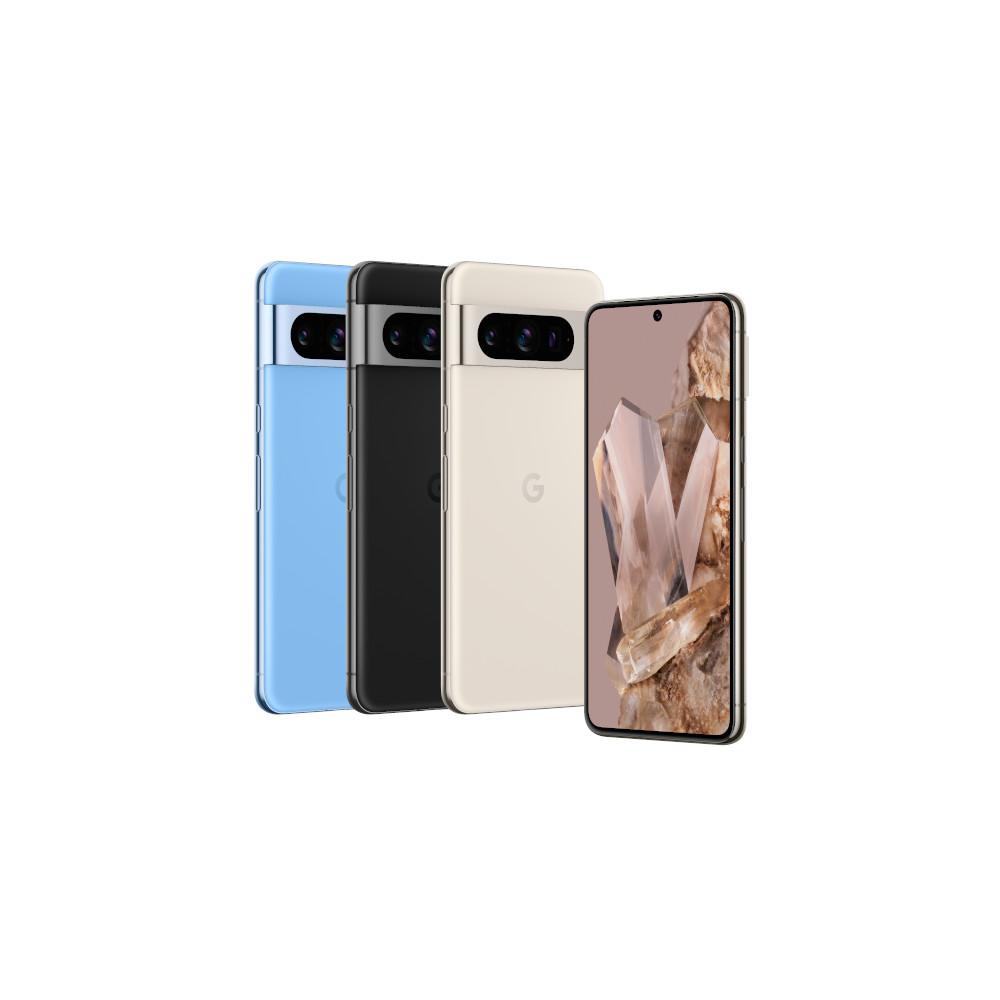

Google Pixel 8 Pro review: FAQs
While not technically waterproof, the Pixel 8 Pro does come with an IP68 rating. That means it can be submerged in water for up to 30 minutes but can incur damage beyond that point.
No, the Google Pixel 8 Pro does not offer expandable storage via an SD card slot.
No, the Pixel 8 Pro does not have a curved screen. It has a 6.7-inch flat AMOLED panel.
Yes, the Google Pixel 8 Pro supports wireless charging at up to 23W with the second-generation Pixel Stand.
Yes, the Pixel 8 Pro supports dual-SIM with a single nano-SIM and downloadable eSIM.